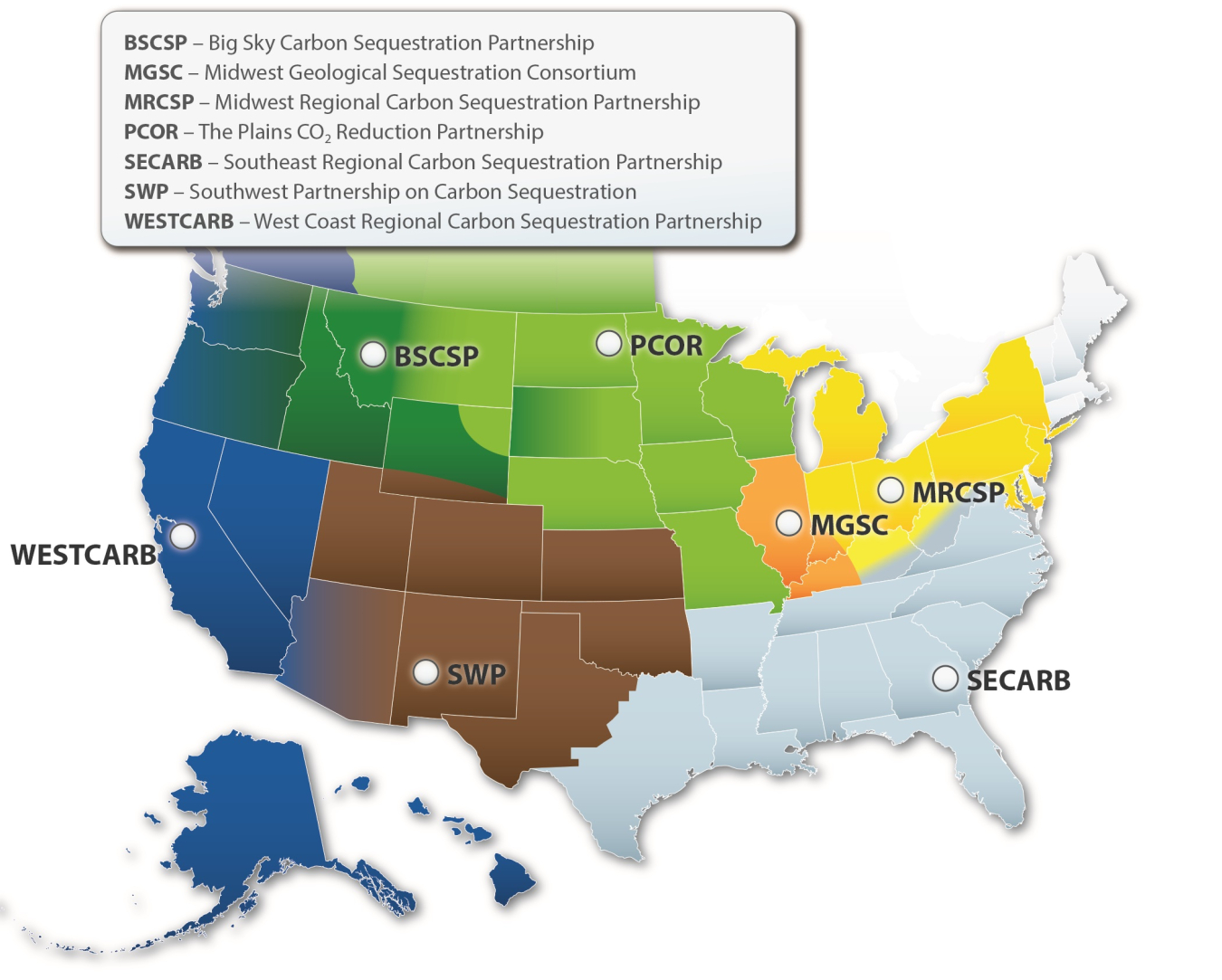The Storage Infrastructure component of the Carbon Storage R&D Program is carrying out regional characterization and small- and large-scale field projects to demonstrate that different storage types in various formation classes, distributed over different geographic regions, both onshore and offshore, have the capability to permanently store CO2 and provide the basis for commercial-scale CO2 projects. Research is needed to prove adequate injectivity, available storage resource, and storage permanence across the range of formation classes and storage types. Small- and large-scale field tests supported by the program are helping to validate injection, simulation/risk assessment, and monitoring strategies, as well as to determine the systems best suited for the particular geologic structure, reservoir architecture, and range of properties characteristic of each geologic formation class.
The Storage Infrastructure component highlights DOE’s awareness of the importance of addressing carbon management at the regional level to most effectively manage differences in geology, climate, population density, infrastructure, and socioeconomic development. Several key initiatives that the Storage Infrastructure component has implemented include,
Carbon Storage Assurance Facility Enterprise (CarbonSAFE) – The CarbonSAFE initiative aims to initiate the early-stage development of integrated carbon capture and storage (CCS) complexes that ultimately could be constructed and permitted for operation. In late 2016, thirteen projects were selected to provide a pre-feasibility study for a commercial scale geological storage site. Objectives for these projects include formation of a CCS coordination team to address regulatory, legislative, technical, public policy, commercial, financial, and other issues specific to commercial-scale deployment of the CO2 storage projects. The projects are developing plans encompassing technical requirements, as well as both economic feasibility and public acceptance of an eventual storage project.
Additionally, three projects were selected to perform a more advanced initial characterization of a storage complex identified as having high potential. Having already demonstrated pre-feasibility, these projects were selected to establish the feasibility of commercial storage (50+ million metric tons CO2) for their respective complexes. Key activities for this phase are comprised of data collection; geologic analysis; identification of contractual and regulatory requirements and plans to satisfy them; subsurface modeling to support geologic characterization, risk assessment, and monitoring; and public outreach. The three awardees carrying out these activities are shown below.
- Southern States Energy Board (Norcross, Georgia) – The Southern States Energy Board will establish a commercial-scale CO2 geologic storage complex adjacent to the Mississippi Power Company Kemper County Energy Facility.
- University of North Dakota (Grand Forks, North Dakota) – The University of North Dakota will determine the feasibility of developing a commercial-scale CO2 geologic storage complex in central North Dakota.
- Board of Trustees of the University of Illinois (Champaign, Illinois) – The University of Illinois will establish the feasibility of a commercial-scale CO2 geologic storage complex within the Mt. Simon sandstone formation located in Macon County, Illinois for industrial-sourced CO2. City Water, Light and Power and the Abbott Power Plant will be evaluated as CO2 sources.
Brine Extraction Storage Tests (BEST) – DOE awarded two projects to develop and validate engineering strategies and approaches for managing reservoir pressure and the flow of stored CO2 in saline reservoirs with concomitant production of fresh water through a Brine Extraction Storage Test (BEST). In a process called plume steering, salty water – known as brine – from the CO2 storage reservoir can be extracted to change the reservoir pressure and the flow of the stored CO2. Moreover, the extracted brine may be treated to produce fresh water, which could be of great value to regions where water resources are scarce. The primary research objective for the BEST projects is to demonstrate, through a well-designed field project, feasible brine extraction/injection strategies for managing reservoir pressure and CO2 flow that could improve storage efficiency at future CO2 storage projects. The two awardees carrying out these activities are shown below.
- Electric Power Research Institute, Inc. and its partners will demonstrate and adaptive management strategy of subsurface pressure, fluid movement, and differential pressure plume behavior using existing wastewater disposal wells and new wells at Plant Smith near Panama City, Florida, operated by Gulf Power Company.
- The University of North Dakota Energy and Environmental Research Center and its partners will evaluate active reservoir management approaches for managing formation pressure, predicting and monitoring differential pressure plume movement, and validating pressure and brine plume model predictions at an operating commercial saltwater disposal facility located near Watford City, North Dakota.
Regional Carbon Sequestration Partnerships (RCSP) – In 2003, DOE awarded cooperative agreements to seven Regional Carbon Sequestration Partnerships, tasked to determine the best geologic storage approaches and apply technologies to safely and permanently store CO2 for their respective regions. Geographical differences in fossil fuel use and storage opportunities across North America dictate regional approaches to storage of CO2 and other greenhouse gases. The RCSPs are focusing on the CCS opportunities within their specific regions, while collectively building an effective and robust nationwide initiative.
- Characterization Phase (2003–2005): Initial characterization of their region’s potential to store CO2 in different geologic formations.
- Validation Phase (2005–2013): Validation of the most promising regional storage opportunities through a series of small-scale field projects.
- Development Phase (2008–2018+): Implementation of large-scale field testing injecting approximately 1 million metric tons of CO2 per project to confirm that CO2 injection and storage can be achieved safely, permanently, and economically.

In addition to small- and large-scale field projects, the RCSPs are also working to develop human capital, encourage stakeholder networking, enhance public outreach and education, and promote information sharing through various technical working groups.
For more detailed information about program activities, visit the NETL website link here.
